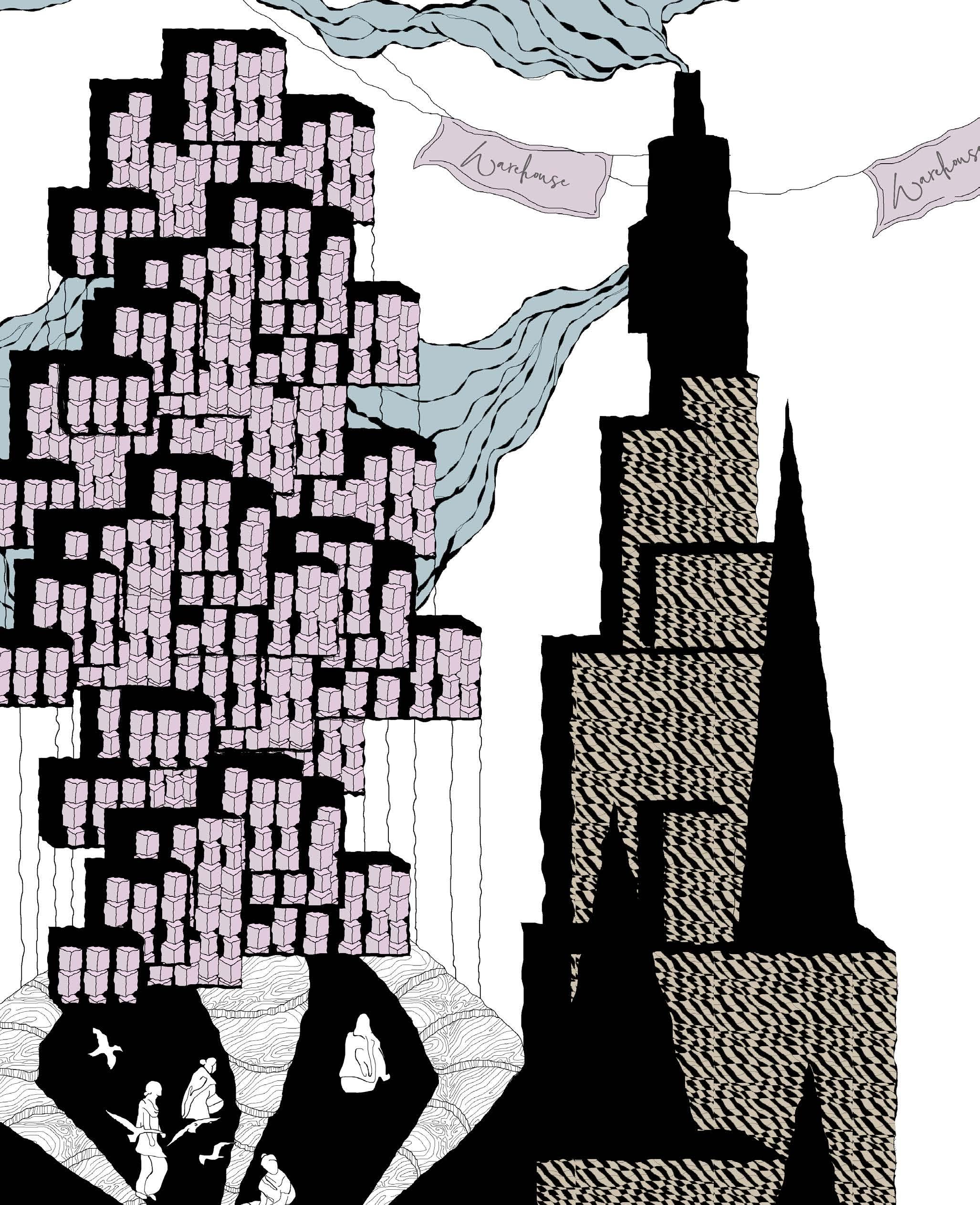
2 minute read
COMMERCIALIZED DYSTOPIA
As a kaleidoscope boldly tosses and turns to present a newly formed visual, the bazaar culture of the Walled City has, inelegantly, transformed into gigantic monstrosities, choking the very character of the Walled City. This new urban form initially resembled the traditional, tightly woven bazaars and seemed to fit in nicely with the ambiance of the city. In time, however, the spatial needs of the market changed as it transformed itself from predominantly retail, into a wholesale market – with the consequent necessity for large amounts of warehousing space. These bazaars exemplify the piecemeal replacement of older building stock that has been going on for at least three decades with single-use building forms. The result has been an unfortunate erasure of not only the historic urban footprint in certain areas but also the loss of the intangible heritage - the traditional neighborhoods and lifestyle of the residents.
In 1988, warehousing was identified as ‘the most intrusive’ commercial feature. Warehouses, varying in size from single-room storage (usually the ground floor in residential buildings or the basement and top floors in commercial buildings) to multi-storied buildings are to be found along with the Circular Garden, the Circular Road, along the main thoroughfares in the Walled City, as well as deep within its residential areas (AKCSP 2018).
Advertisement
Dating back to 1917, the British planner, Patrick Geddes, inscribes the activation of ad-hoc commercial development on the Circular Road – “the indiscriminate and plan-less erection of shops and other buildings — can only be described as an extreme and grievous case of the business process” (Ezdi 2007).
The Shah Alami Bazaar is a replacement for Machhi Hatta Bazaar, which burnt down during the 1947 partition riots – the land upon which would have existed thousands of historic homes and numerous neighborhoods. Shah Alami sprawled itself further east and has over the years developed into a hub of wholesale trading. With now its heavily congested double carriageway, Shah Alami serves as the central vehicular access street into the heart of the Walled City. Outlets for electrical appliances, marble shops, shoe markets, and other bulky objects of domestic use such as steel trunks, stainless steel utensils, crockery appliances, and the like dominate the shops fronting onto the main bazaar. The northern part of Shah Alami provides services and retail stores, including medical services in Wachowali Bazaar (Doctors’ Bazaar) and outlets of mass-produced jewelry. Where Shah Alami changes into Dabbi Bazaar, a range of crockery, kitchenware, threads, and needle shops, as well as beauty Salons are concentrated. From here, the jewelry street of the Soha Bazaar, covered by an elaborate shelter, strikes out south-westwards. On the east, there are streets occupied by the Kasehra Bazaar (a market for metalwork) and the Baan Bazaar specializing in cots, charpoys, and the woven nets wrapping traditional furniture. Over the years, the wholesale outlets in this part of the Inner City have continually grown. The commercial sector has encroached into the adjacent areas, stretching as far as Mochi Gate in the east, at the expense of the residents (AKCSP 2018).











